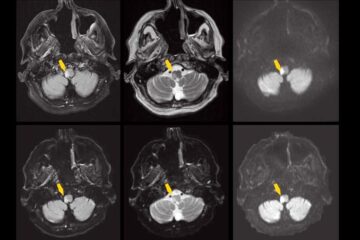Chemerin9 Variants for Diagnosis and Therapy of Pancreatic and Oesophageal Cancer

<strong>Background</strong><br>Pancreatic and oesophageal tumors are comparatively rare but characterized by high mortality rates. One reason is that such tumors are commonly detected only at advanced stages of cancerous disease. Often the disease is detected by chance, for instance during the course of other medical examinations. <br><br>
<strong>Technology</strong><br> Occurrence of CMKLR1, a G protein-coupled receptor, was found to be elevated in oesophageal squamous cell carcinoma and pancreatic adenocarcinoma. We offer peptidic variants of CMKLR1 ligand Chemerin9 with highest stability and optimized ligand binding properties. Attached to a detectable label or therapeutically active agent the peptide variants are suitable for imaging of mestastases formation in pancreatic and oesophageal tumors and its therapy in a theranostic approach.<br> <p><strong>Benefits</strong><br> <ul> <li>Reliable diagnosis of primary pancreatic and oesophageal tumors</li> <li>Promising Target: CMKLR1</li> <li>Reliable detection of early metastases</li> <li>Suitable for routine medical screening</li> </ul> <p><strong>IP Rights</strong><br> European priority application filed<br> <strong><br> Patent Owner</strong><br> Charité – Universitätsmedizin Berlin</p>
Weitere Informationen: PDF
ipal GmbH
Tel.: +49 (0)30/2125-4820
Ansprechpartner
Dr. Dirk Dantz
Media Contact
Alle Nachrichten aus der Kategorie: Technologieangebote
Neueste Beiträge

FDmiX: Schnelle und robuste Serienproduktion von Nanopartikeln
Verkapselungstechnologie der nächsten Generation… Nukleinsäure-basierte Medikamente wie mRNA-Impfstoffe bieten ein enormes Potenzial für die Medizin und eröffnen neue Therapieansätze. Damit diese Wirkstoffe gezielt in die Körperzellen transportiert werden können, müssen…

Sensor misst Sauerstoffgehalt in der Atemluft
Eine zu geringe oder zu hohe Sauerstoffsättigung im Blut kann bleibende körperliche Schäden bewirken und sogar zum Tod führen. In der Intensiv- und Unfallmedizin wird die Sauerstoffkonzentration der Patientinnen und…

Neue MRT-Technik erkennt Schlaganfälle in kürzester Zeit
Tag gegen den Schlaganfall: Forschende der Universitätsmedizin Mainz haben im Rahmen einer Studie erstmals eine KI-gestützte Magnetresonanz-Tomographie (MRT)-Methode untersucht, um akute ischämische Schlaganfälle effizienter detektieren zu können. Dabei setzten sie…

















